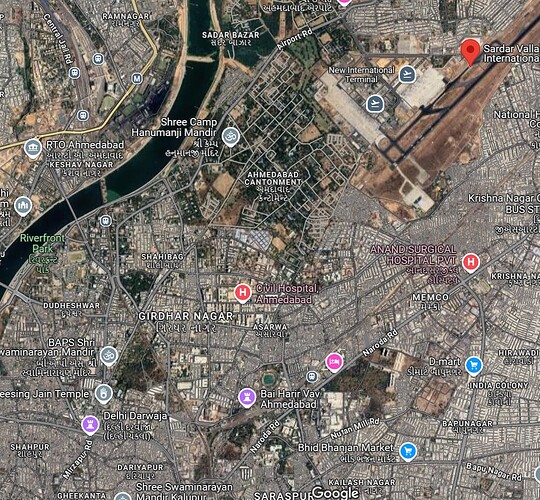An Air India flight to London Gatwick has crashed in Ahmedabad in western India shortly after take-off, with 242 people on board.
Air India said that those on the Boeing 787-8 aircraft included 169 Indian nationals, as well as 53 British citizens, seven Portuguese and one Canadian. There were also 10 cabin crew and two pilots.
Video shows landing gear still down after takeoff. I’ll put my money on one or both engines failing
The pilot issued a mayday call citing engine failure. The most likely scenario was a bird strike, similar to the miracle on the Hudson River landing a decade ago.
RIP to all those killed on board and on the ground.
RIP. No survivors. The airplane was full of fuel for the long flight ![]()
Well, there are almost 1’200 Dreamliners around the world.
In a flame out, the only two friends you can have are altitude and speed…these poor bastards had neither.
Indeed, and its certainly not ideal that the airport is surrounded by urban sprawl making a safe ditching almost impossible.
Looking at this video, I don’t see evidence of a flame out (bird strike) but more chilling is that it doesn’t seem that the flaps were down for takeoff either.
If true, this indicates serious pilot error or distraction since the 787 has a Takeoff Configuration Warning System (TOWS) that would have persistently blared out warnings. Pilots are trained to reject take off on any such configuration warning.
Apparently one person has survived.
It would have to be a double engine failure to be unable to climb.
Those in aviation are leaning towards the crew having retracted the flaps instead of the gear. All speculation of course.
THe survivor said he opened the emergency exit after take off and jumped out.(CNN) Sound completely fabrikated to me. Typical Indian story!
There have been accidents (with other aircraft) where the TOWS did not work
According to Mentor Pilot (YouTube) the 787 would have needed 60+ extra knots v1 to get airborne with no flaps. So unlikely it climbed to 600 feet on a clean wing.
Its possible that Boeing already have a clue about the cause of the crash if the plane was transmitting continuous AHM and ACARS data just prior to the crash. The black box recorder is definitive, but basic metrics like control surface positions, flaps, trim settings, engine temp/power, control inputs etc.. are all relayed to Boeing and Rolls Royce via satellite as part of the ACARS/AHM data stream (continuously or periodically).
If the cause was an aircraft fault rather than pilot error, then this could finally bury Boeing. So it may also be worth the SEC keeping a close watch for any unusual activity in the company’s share price, because I can imagine someone on the inside dumping stock if its the former explanation.
And they push a single button and the computer gives the answer in 1 second, right?
Data stored somewhere does not mean “knowing”. Yes, the clues to answer the questions are there, but there’s an investigation process. People needs to work.
No one is suggesting this would conclusively prove anything, but it could help resolve the question of whether the flaps were deployed at any point during the flight. It may also clarify whether there was a sudden, uncommanded loss of thrust that triggered the deployment of the RAT, as some reports have suggested.
Another possible explanation for both engines failing simultaneously is fuel contamination. It’s virtually unheard of for twin-engine failure to occur without a common cause given the redundancy built into modern jets e.g. each engine has independent fuel lines, oil systems, electronics and control units. That leaves contaminated fuel or bird strike as the most likely “shared factor” of an uncommanded loss of thrust on takeoff
Watching the video footage it looks to me very similar to the Airbus crash in Mulhouse back in 1988.
If you watch that video I posted, the pilots say fuel contamination is highly unlikely.
Nothing like.
The Air France was doing a low level fly by and left it too late to climb and miss the forest.
The Air India however, climbed to 600, then started a glide into the ground.
I agree with him that flaps are probably the key to this accident, but its still good to dismiss all other factors e.g. bird strike and dual engine failure. Blame may lie with the pilot monitoring for raising the flaps rather than the gear, but the pilot flying should have stopped pulling up as soon as they got the stick shaker stall warning. Even at a height of 600 ft there might have been a slim chance of getting out of the stall, but pulling up and further bleeding speed was a death sentence.
In my limited experience of flying light aircraft, its very difficult to train out this hard wired instinct to pull up when you’re sinking.


